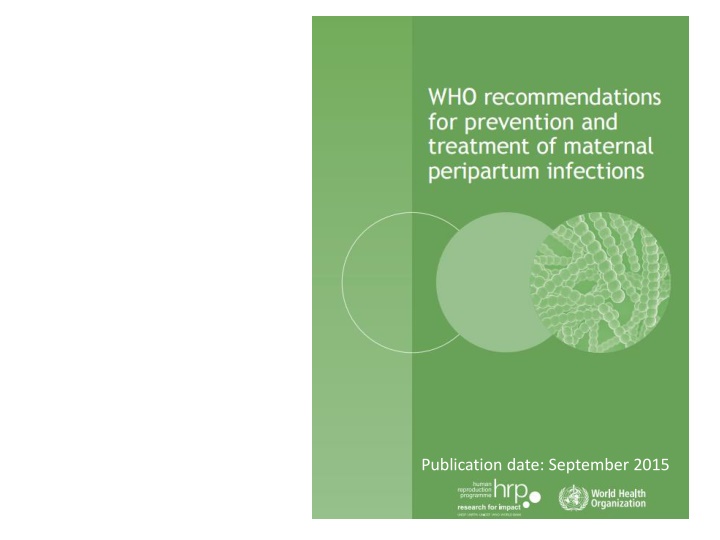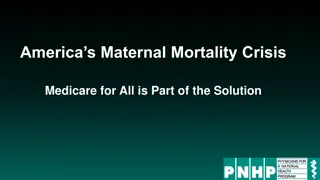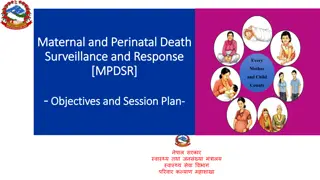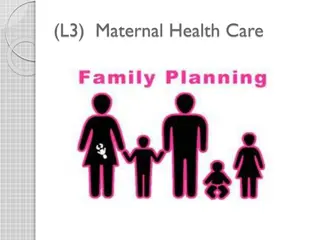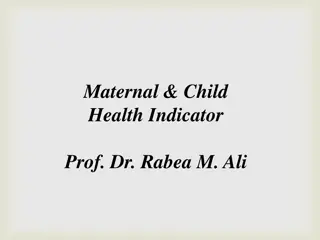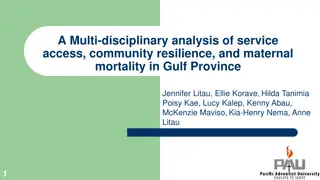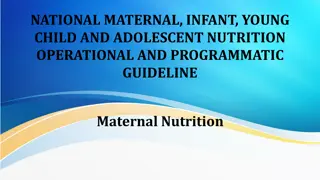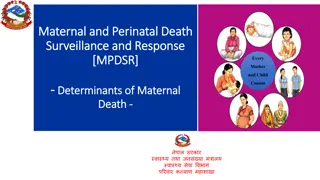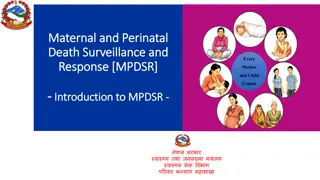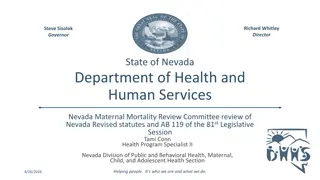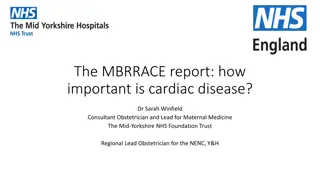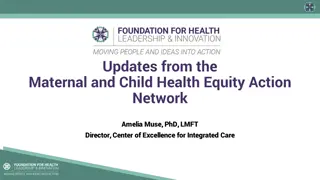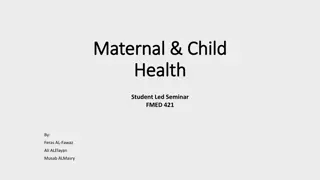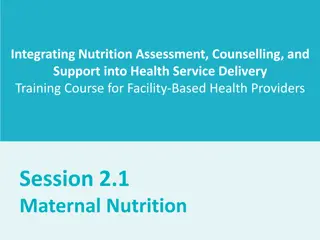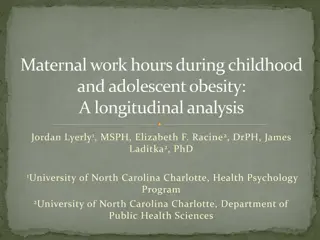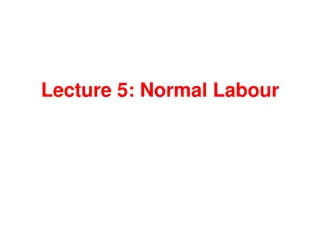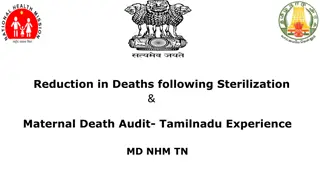Recommendations for Maternal Care during Labour
This publication from September 2015 provides evidence-based recommendations regarding maternal care during labor, including topics such as perineal shaving, vaginal examinations, antibiotic administration, and more. The recommendations are supported by varying levels of evidence quality, guiding healthcare providers in decision-making for improved maternal and neonatal outcomes.
Download Presentation

Please find below an Image/Link to download the presentation.
The content on the website is provided AS IS for your information and personal use only. It may not be sold, licensed, or shared on other websites without obtaining consent from the author.If you encounter any issues during the download, it is possible that the publisher has removed the file from their server.
You are allowed to download the files provided on this website for personal or commercial use, subject to the condition that they are used lawfully. All files are the property of their respective owners.
The content on the website is provided AS IS for your information and personal use only. It may not be sold, licensed, or shared on other websites without obtaining consent from the author.
E N D
Presentation Transcript
Recommendation Strength of recommendation and quality of evidence 1. Routine perineal/pubic shaving prior to giving vaginal birth is not recommended Conditional recommendation based on very low-quality evidence 2. Digital vaginal examination at intervals of four hours is recommended for routine assessment of active first stage of labour in low-risk women Strong recommendation based on very low-quality evidence 3. Routine vaginal cleansing with chlorhexidine during labour for the purpose of preventing infectious morbidities is not recommended Strong recommendation based on moderate-quality evidence 4. Routine vaginal cleansing with chlorhexidine during labour in women with group B Streptococcus (GBS) colonization is not recommended for prevention of early neonatal GBS infection Conditional recommendation based on very low-quality evidence
Recommendation Strength of recommendation and quality of evidence 5. Intrapartum antibiotic administration to women with group B Streptococcus (GBS) colonization is recommended for prevention of early neonatal GBS infection Conditional recommendation based on very low-quality evidence 6. Routine antibiotic prophylaxis during the second or third trimester for all women with the aim of reducing infectious morbidity is not recommended Strong recommendation based on very low-quality evidence 7. Routine antibiotic administration is not recommended for women in preterm labour with intact amniotic membranes Strong recommendation based on moderate-quality evidence 8. Antibiotic administration is recommended for women with preterm prelabour rupture of membranes Strong recommendation based on moderate-quality evidence
Recommendation Strength of recommendation and quality of evidence 9. Routine antibiotic administration is not recommended for women with prelabour rupture of membranes at (or near) term Strong recommendation based on low-quality evidence 10. Routine antibiotic administration is not recommended for women with meconium-stained amniotic fluid Conditional recommendation based on low-quality evidence 11. Routine antibiotic prophylaxis is recommended for women undergoing manual removal of the placenta Strong recommendation based on very low-quality evidence 12. Routine antibiotic prophylaxis is not recommended for women undergoing operative vaginal birth Conditional recommendation based on very low-quality evidence
Recommendation Strength of recommendation and quality of evidence 13. Routine antibiotic prophylaxis is recommended for women with a third- or fourth-degree perineal tear Strong recommendation based on very low-quality evidence 14. Routine antibiotic prophylaxis is not recommended for women with episiotomy Strong recommendation based on consensus view 15. Routine antibiotic prophylaxis is not recommended for women with uncomplicated vaginal birth Strong recommendation based on very low-quality evidence 16. Vaginal cleansing with povidone-iodine immediately before caesarean section is recommended Conditional recommendation based on moderate-quality evidence
Recommendation Strength of recommendation and quality of evidence 17. The choice of an antiseptic agent and its method of application for skin preparation prior to caesarean section should be based primarily on the clinician s experience with that particular antiseptic agent and method of application, its cost and local availability Conditional recommendation based on low-quality evidence 18.0 Routine antibiotic prophylaxis is recommended for women undergoing elective or emergency caesarean section Strong recommendation based on moderate-quality evidence 18.1 For caesarean section, prophylactic antibiotics should be given prior to skin incision, rather than intraoperatively after umbilical cord clamping Strong recommendation based on moderate-quality evidence 18.2 For antibiotic prophylaxis for caesarean section, a single dose of first-generation cephalosporin or penicillin should be used in preference to other classes of antibiotics Conditional recommendation based on very low-quality evidence
Recommendation Strength of recommendation and quality of evidence 19. A simple regimen such as ampicillin and once-daily gentamicin is recommended as first- line antibiotics for the treatment of chorioamnionitis Conditional recommendation based on very low-quality evidence 20. A combination of clindamycin and gentamicin is recommended as first-line antibiotics for the treatment of postpartum endometritis Conditional recommendation based on very low-quality evidence
